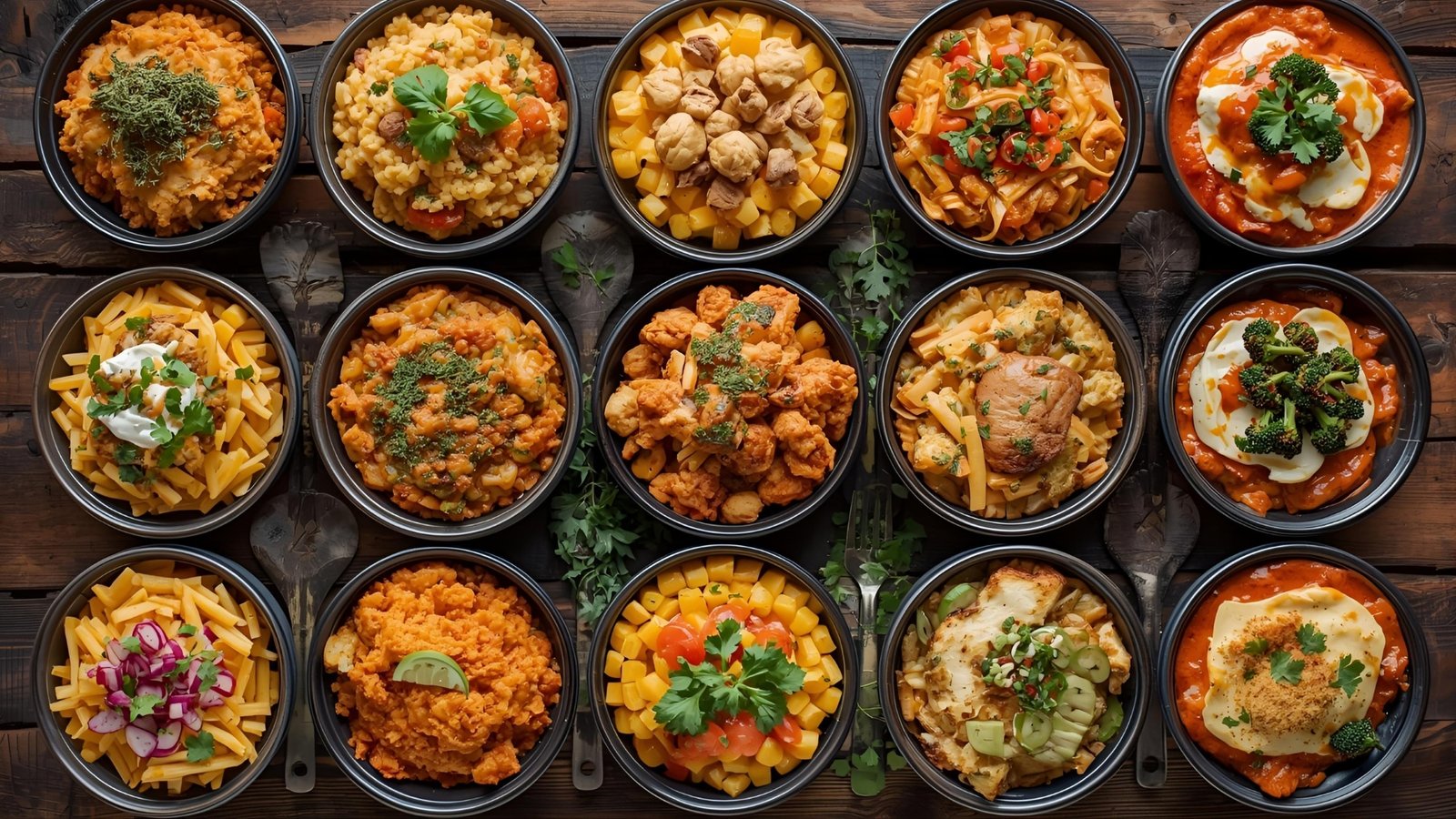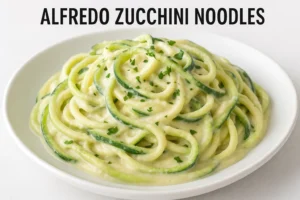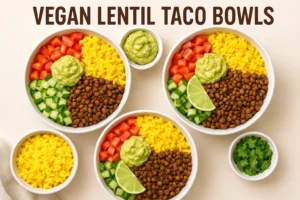When you’re on a weight-loss journey, dinner often feels like a battleground between hunger and healthy choices. You want something satisfying, flavorful, and filling—but not something that derails your progress. Enter weight-loss dinner casseroles: hearty, comforting, and nutrient-dense. The trick is making them in three steps or fewer, so you’re not spending your evening chopping, stirring, and washing pans. In this article, we’ll walk you through 12 weight loss dinner casseroles that strike the balance between flavor and nutrition, each deliverable in minimal time and effort.
Why Casseroles Work for Weight Loss
Casseroles often get a bad rap for being heavy, overly rich in cheese and cream, but they can actually be powerful allies in a weight-loss plan when prepared intelligently. An adequately designed weight-loss dinner casserole is:
Balanced: includes lean protein, fiber-rich veggies, and modest amounts of healthy fats
Portion-friendly: baked in a dish you can slice or scoop into sensible servings
Make-ahead friendly: many can be prepped earlier and baked when needed
Simple: especially when limited to three steps—assemble, bake, serve
By combining these features, you get a one-dish meal that’s easy, nutritious, and supportive of a calorie-controlled diet.
How to Use “Three Steps or Less” as Your Guide
Because the key promise is doing it in three steps or fewer, here’s a mini blueprint you can apply to each recipe:
Prep or combine main ingredients (protein, vegetables, grains, or substitutes)
Add liquid, seasoning, and binding agents (such as light broth, egg, salsa, or low-fat cheese)
Bake or broil until set or golden
That’s it: no multiple stovetop transitions, no separate saucepan unless necessary. Let’s dive into the 12 casseroles that follow this structure.
12 Weight Loss Dinner Casseroles in Three Steps

Each of these casseroles adheres to the three-step format (or very close, with minimal extra work). I group them by style or flavor theme so you can mix up your week.
1. Creamy Chicken & Zucchini Casserole
Style & Benefits
This is a low-carb alternative to pasta-based bakes, replacing noodles with zucchini ribbons. The lean chicken provides protein, while zucchini gives volume and fiber.
How to Make (3 Steps)
Combine diced cooked chicken, sliced zucchini, a bit of light milk (or low-fat yogurt), garlic, and seasoning in a baking dish.
Stir in grated low-fat mozzarella or Parmesan (small amount) to bind.
Bake until bubbly and the zucchini is tender.
Why It Supports Weight Loss
By cutting out pasta and using vegetables as the base, you reduce refined carb load while still filling your plate. The protein keeps you satiated. This recipe is one of the featured options in healthy casserole collections.
2. Rotisserie Chicken, Mushroom & Rice Casserole
Style & Benefits
Utilizing a pre-cooked rotisserie chicken (a shortcut), earthy mushrooms, and whole-grain or brown rice, this dish strikes a balance between ease and nutrition.
How to Make (3 Steps)
Shred rotisserie chicken, slice mushrooms, and mix with cooked brown rice.
Stir in light stock or unsweetened milk, along with a bit of flour or cornstarch, for added creaminess.
Bake until warmed and top lightly with a sprinkling of cheese.
Why It Supports Weight Loss
Using a rotisserie chicken saves time and reduces added fats in cooking. Whole-grain rice provides fiber and sustained energy. (This casserole is directly referenced in existing healthy collections.)
3. Creamy Lemon-Dill Chicken & Rice Casserole
Style & Benefits
A bright, herbed version of chicken and rice, with lemon and dill adding flavor without the need for heavy sauces.
How to Make (3 Steps)
Combine cooked chicken, cooked brown rice, diced onion, and a splash of lemon juice, along with fresh or dried dill.
Stir in low-fat milk or Greek yogurt, along with a bit of cornstarch or arrowroot.
Bake until edges are bubbly and topping is golden.
Why It Supports Weight Loss
Lemon and dill make the dish flavorful with minimal calories. The lean protein/rice base helps manage hunger and reduce the glycemic impact. This is another casserole in the “three steps or less” collection.
4. Skillet Spinach, Mushroom & Wild Rice Casserole
Style & Benefits
A more one-pan approach: wild rice, mushrooms, spinach—all cooked in one dish, then baked briefly.
How to Make (3 Steps)
Pre-cook wild rice partially; sauté mushrooms and greens in light stock or water directly in your baking skillet or oven-safe pan.
Stir in the rice, add the seasoning, and, if needed, a touch of low-fat milk or egg for binding.
Bake until set.
Why It Supports Weight Loss
Having vegetables and whole grains in one dish reduces the need for side dishes. Minimal handling ensures stress-free prep. Another recipe from the healthy collections uses this format.
5. Spinach, Feta & Artichoke Tater Tot Casserole
Style & Benefits
This playfully uses tater tots as a crunchy topping while featuring spinach and artichoke inside. The base is egg-based, which boosts the protein content.
How to Make (3 Steps)
Mix thawed or drained spinach and artichoke hearts with beaten eggs, a bit of low-fat milk, garlic, and seasoning.
Pour mixture into baking dish.
Arrange the frozen tater tots on top and bake until the eggs are set and the crust is golden.
Why It Supports Weight Loss
Although it includes a fun topping (the tots), the bulk consists of vegetables and eggs. Because it’s baked, not fried, it’s still a lighter comfort option among healthy casserole choices.
6. Dump & Bake Pizza Pasta Casserole
Style & Benefits
This is a “dump and bake” version of pizza in casserole form—everything goes into the dish, with minimal stirring.
How to Make (3 Steps)
Combine cooked whole-wheat fusilli (or healthy pasta substitute), tomato sauce, lean protein (e.g., turkey or chicken), and vegetables in a baking dish.
Stir to unify flavors.
Bake until hot and top with a light sprinkling of part-skim cheese.
Why It Supports Weight Loss
Using whole-wheat pasta, lean protein, and vegetables mitigates the calorie burden. The ease of assembly ensures you’ll stick with a healthy dinner plan.
7. Chicken Alfredo & Broccoli Rice Casserole
Style & Benefits
This version lightens the classic Alfredo by using a modest amount of cheese or substituting Greek yogurt, while combining broccoli and rice for added fiber.
How to Make (3 Steps)
Mix cooked chicken, steamed or blanched broccoli, and cooked rice in a casserole dish.
Stir in a sauce made from light milk, Greek yogurt (or low-fat cream), garlic, and your desired seasonings.
Bake until warmed and lightly golden.
Why It Supports Weight Loss
Broccoli adds volume and fiber, thereby reducing the calorie density per serving. Replacing heavy cream with lighter dairy maintains the creamy texture while reducing fat.
8. Stuffed Pepper Casserole
Style & Benefits
This one captures the flavors of stuffed bell peppers without the labor of stuffing each pepper.
How to Make (3 Steps)
Mix ground lean meat (or lentils/beans for a vegetarian version), cooked rice, diced bell peppers, tomatoes, and seasoning.
Place the mixture in a baking dish.
Bake until the peppers are softened and the mixture is heated through; top with cheese lightly if desired.
Why It Supports Weight Loss
By embedding vegetables into the base, you increase nutrient density while keeping portions manageable. The layering effect gives the same flavor punch as stuffed peppers without extra steps.
9. Chicken Fajita Casserole
Style & Benefits
Fajita-style flavors (onions, peppers, spices) combine with chicken and possibly a low-carb layer like corn tortillas or cauliflower rice.
How to Make (3 Steps)
Mix pre-cooked chicken strips with sautéed peppers, onions, and fajita seasoning.
Layer in a baking dish with a base of cut corn tortillas or cauliflower rice.
Bake until melted, and optionally top with a small amount of low-fat cheese.
Why It Supports Weight Loss
The fajita spices bring heat, which can slightly boost metabolism, and the vegetable-forward approach ensures a rich source of fiber and flavor. You get a Mexican-inspired casserole in minimal time.
10. Creamy Spinach-&-Feta Chicken Casserole
Style & Benefits
Inspired by spanakopita, this casserole layers spinach, feta, and tender chicken with light binding agents.
How to Make (3 Steps)
Combine cooked chicken, sautéed spinach, crumbled feta, and seasoning.
Pour in beaten egg or light milk-egg mixture for binding.
Bake until set and golden on top.
Why It Supports Weight Loss
Spinach brings volume for a few calories, and feta gives flavor with less quantity. Protein from chicken stabilizes blood sugar and keeps you full.
11. Nacho Cauliflower Casserole
Style & Benefits
A low-carb twist on nachos using cauliflower in place of chips or tortillas.
How to Make (3 Steps)
Roast or steam cauliflower florets, then mix with diced peppers, salsa, and cooked lean protein (such as beans, chicken, or turkey).
Transfer to a baking dish and top with shredded cheese or cheese alternative.
Bake until the cheese melts and the edges are crisp.
Why It Supports Weight Loss
Cauliflower is low in calories but high in fiber and water, making it an ideal replacement for starchy bases. The spicy salsa helps bind and flavor without heavy sauces. This dish is featured in healthy casserole roundups.
12. Green Chile Rotisserie Chicken Casserole
Style & Benefits
With shredded rotisserie chicken, green chiles, corn, and light cheese, this dish delivers a Southwestern flair.
How to Make (3 Steps)
Shred rotisserie chicken and combine with canned or fresh green chiles, corn, and cooked rice (optional).
Stir in light broth or milk, along with seasoning (such as cumin, lime, and garlic).
Bake until heated through and the edges are slightly crisp; top with crushed tortilla chips, if desired.
Why It Supports Weight Loss
Again, the rotisserie chicken shortcut, combined with vegetables and a mild spice profile, makes eating healthy effortless. The hint of tortilla chips gives texture without going overboard. This, too, is part of the 12-step collection.
Tips to Make These Casseroles Work Even Better for Weight Loss
Choose High-Quality, Lean Proteins
Use chicken breast, turkey, lean beef, fish, beans, or lentils to keep saturated fat in check. These ingredients help boost satiety and support muscle maintenance during weight loss.
Bulk Up with Low-Calorie Vegetables
Add greens like spinach, zucchini, bell peppers, cauliflower, mushrooms—these contribute fiber, volume, and nutrition without many calories.
Lighten the Binder or Sauce
Instead of heavy cream or full-fat cheese, use low-fat milk, Greek yogurt, light cream, or even a slurry of stock and cornstarch. You still get a creamy texture without overdoing calories.
Watch Portion Sizes
Even in a casserole, a sensible scoop (for example, 1½ cups or ~350–400 ml) is often enough. Pair with a green salad or steamed vegetables, rather than bread or side pasta.
Use Make-Ahead or Shortcuts
Cook rice ahead, shred chicken in advance, or use leftover vegetables to save time. Many of these casseroles demand minimal last-minute effort.
Reheating & Storage
These casseroles reheat well, so cooking double and saving leftovers supports consistency. Bake covered to preserve moisture.
Conclusion
Casseroles don’t have to be heavy, calorie-laden meals that derail your weight-loss efforts. When you structure them with lean protein, abundant vegetables, intelligent binding agents, and portion awareness—and commit to a three-step process—you get satisfying, wholesome dinners that support your goals. The 12 Easy Weight Loss Dinner, which take three steps or less to prepare, offer variety across flavors, including Mexican, Mediterranean, comfort food, low-carb, and veggie-forward options.
Pick a few that excite you, stock your kitchen with essentials, and rotate them through your week. You’ll find that healthy eating doesn’t have to be tedious, time-consuming, or restrictive. You can enjoy warming, filling dinners while still progressing toward your weight goals.
FAQs
Q: Are these casseroles low enough in calories to support weight loss?
Yes—when built with lean protein, limited cheese, and plenty of vegetables, each casserole typically comes in at around 400–450 calories per serving, depending on the portion size and ingredients.
Q: Can I substitute ingredients (e.g., gluten-free, dairy-free)?
Absolutely. Use gluten-free pasta or rice, dairy-free milk or yogurt, or cheese alternatives. Beans or tofu can replace meat in many cases.
Q: How do I reduce sodium in these casseroles?
Use low-sodium broths, avoid canned ingredients high in salt (or rinse them), and flavor with herbs, citrus, garlic, and spices instead of excess salt.
Q: What’s the best way to reheat leftovers without drying them out?
Cover with foil or use a microwave-safe lid, and add a splash of water or broth before reheating to maintain moisture.
Q: Can I freeze these casseroles?
Yes. Most of them freeze well; assemble and freeze before baking, or bake and then freeze individual portions. Thaw in the fridge and reheat thoroughly before eating.
If you like, I can put together printable versions of these 12 recipes or a weekly dinner plan based on them. Just say the word!
See More: 10 Easy Millet Recipes for Weight Loss








